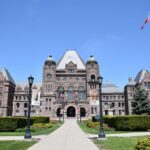Environment and Climate Change Canada (ECCC) yesterday published the Improved Forest Management on Private Land, Version 1.0 protocol (IFM Protocol) alongside the previously published protocols for Landfill Methane Recovery and Destruction and Reducing Greenhouse Gas Emissions from Refrigeration Systems (see our earlier bulletin here). The IFM Protocol provides requirements for project implementation and the methodology for quantifying greenhouse gas (GHG) reductions from eligible IFM projects. Carbon offset credits generated under the Canadian Greenhouse Gas Offset Credit System Regulations (the Regulations) from eligible projects can be used to comply with obligations under the federal Output-Based Pricing System or to meet voluntary climate targets or commitments.
The launch of the IFM Protocol follows British Columbia’s recently published revised Forest Carbon Offset Protocol 2.0 earlier this month, which, among other updates, now requires First Nation engagement and consultation on all projects (see our bulletin on the draft protocol here).
This bulletin briefly summarizes the IFM Protocol and provides updates regarding other protocols under development by ECCC.
The IFM Protocol
Eligible projects under the IFM Protocol may register in Canada’s GHG Offset Credit System if the following conditions, among others, are met:
- Location. The project must be located in private forestland where carrying out forest management activities is legally permissible and is considered merchantable (“managed forestland”) in a province or territory in Canada. However, the IFM Protocol is also applicable to provincial and federal Crown lands where a First Nation has exclusive use and occupation.
- Baseline scenarios. Baseline scenarios may be updated during the crediting with a minimum of 5 years between updates. To determine the baseline scenario, proponents must follow a 3-step process set out in the IFM Protocol to determine regional and project-specific scenarios and the most conservative baseline scenarios between them.
- Eligible project activities. Project proponents may undertake any IFM activity that enhances carbon stocks within the project site relative to the baseline scenario. Eligible project activities include, among others, reducing volume of harvest (i.e., conservation), thinning diseased and suppressed trees, increasing rotation ages, and reducing competing brush and short-lived forest species.
- Additionality. GHG reductions must not occur due to federal, provincial, territorial, or municipal laws or legal requirements including other carbon pricing mechanisms and legal requirements that mandate project proponents to maintain or store forest carbon or implement the proposed project activities. In addition, emission sources included in a facility’s GHG emissions reported under federal, provincial, or territorial pricing mechanisms are not eligible for federal offset credits.
- Project start date and crediting period. Eligible projects must have a start date that is on or after January 1, 2017. Projects implemented under the IFM Protocol have a crediting period of 25 years, subject to exceptions in the Regulations.
- Ineligible projects. Any activities that involve a land use change, prevent a land use change, or change of land cover, such as afforestation/reforestation and avoided conversion of forestlands, are not eligible under the IFM Protocol.
- Environmental and social safeguard. Projects must comply with applicable environmental legal requirements and avoid potential negative environmental impacts including from the use of non-native species, genetically modified trees or clonal species and conversion of natural forests to plantation forests.
- Environmental integrity account. Projects must deposit the required percent of offset credits generated by a project in environmental integrity account as provided in the Regulations. In addition, project proponents that undertake reversal risk mitigation measures during the crediting period may apply a percentage discount to the required deposit. Eligible mitigation activities and related discounts include: (i) Indigenous community-based monitoring (4%); (ii) use of conservation easements or other restrictions on land use change/forest management (4%); (iii) Indigenous-led project (2%); (iv) Indigenous involvement in risk management planning (2%); and natural disturbance mitigation measures (2%).
Upcoming ECCC webinar. Interested stakeholders are encouraged to register for the upcoming webinar presented by the ECCC, providing a high-level overview of the IFM Protocol and its methodology on May 29, 2024.
Protocols Under Development
Updates regarding other protocols under development by ECCC for the GHG Offset Credit System include:
- Reducing Enteric Methane Emissions from Beef Cattle. ECCC published a draft protocol for a comment period, which closed on February 6, 2024. We expect further consultations and finalization of the protocol to continue throughout 2024.
- Avoidance of Manure Methane Emissions through Anaerobic Digestion and Other Treatments. ECCC indicated that development of the Anaerobic Digestion protocol was initiated in spring 2023.
- IFM on Public Lands. We understand that ECCC continues to consult relevant stakeholders, including First Nations and Indigenous Peoples, on the development of the IFM on Public Lands protocol, which we expect to be developed and published later this year.
- Enhanced Soil Organic Carbon and Direct Air Carbon Dioxide Capture (DAC) and Sequestration. ECCC noted that development of these two protocols ongoing.
- Bioenergy Carbon Dioxide Capture and Sequestration (BECCS). ECCC indicated that subsequent project types under consideration for future federal offset protocol development include a BECCS protocol.
For further information or to discuss the contents of this bulletin, please contact Lisa DeMarco at lisa@resilientllp.com.
Special thanks to Anuja Purohit for her assistance in preparing this bulletin.



